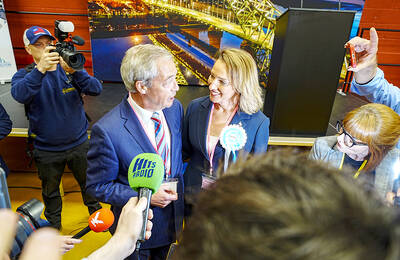The rising demand for flat-screen televisions could have a greater impact on global warming than the world’s largest coal-fired power stations, a leading environmental scientist warned on Wednesday.
Manufacturers use a greenhouse gas called nitrogen trifluoride to make the televisions and as the sets have become more popular, annual production of the gas has risen to about 4,000 tonnes.
As a driver of global warming, nitrogen trifluoride is 17,000 times more potent than carbon dioxide, yet no one knows how much of it is being released into the atmosphere by the industry, said Michael Prather, director of the environment institute at the University of California, Irvine.
Prather’s research reveals that production of the gas, which remains in the atmosphere for 550 years, is “exploding” and is expected to double by next year. Unlike common greenhouse gases such as carbon dioxide, sulphur hexafluoride (SF6) and perfluorocarbons (PFCs), emissions of the gas are not restricted by the Kyoto protocol or similar agreements.
Writing in the journal Geophysical Research Letters, Prather and a colleague, Juno Hsu, said this year’s production of the gas would be equivalent to 67 million tonnes of carbon dioxide, meaning it has “a potential greenhouse impact larger than that of the industrialized nations’ emissions of PFCs or SF6, or even that of the world’s largest coal-fired power plants.”
While concerns have led Toshiba Matsushita Display Technology to avoid using the gas, Air Products, which produces it for the electronics industry, told New Scientist that very little nitrogen trifluoride was being released into the atmosphere.
But Prather said that as the gas is not controlled in the same way as other emissions, companies can be careless with it.

Kehinde Sanni spends his days smoothing out dents and repainting scratched bumpers in a modest autobody shop in Lagos. He has never left Nigeria, yet he speaks glowingly of Burkina Faso military leader Ibrahim Traore. “Nigeria needs someone like Ibrahim Traore of Burkina Faso. He is doing well for his country,” Sanni said. His admiration is shaped by a steady stream of viral videos, memes and social media posts — many misleading or outright false — portraying Traore as a fearless reformer who defied Western powers and reclaimed his country’s dignity. The Burkinabe strongman swept into power following a coup in September 2022

‘FRAGMENTING’: British politics have for a long time been dominated by the Labor Party and the Tories, but polls suggest that Reform now poses a significant challenge Hard-right upstarts Reform UK snatched a parliamentary seat from British Prime Minister Keir Starmer’s Labor Party yesterday in local elections that dealt a blow to the UK’s two establishment parties. Reform, led by anti-immigrant firebrand Nigel Farage, won the by-election in Runcorn and Helsby in northwest England by just six votes, as it picked up gains in other localities, including one mayoralty. The group’s strong showing continues momentum it built up at last year’s general election and appears to confirm a trend that the UK is entering an era of multi-party politics. “For the movement, for the party it’s a very, very big

ENTERTAINMENT: Rio officials have a history of organizing massive concerts on Copacabana Beach, with Madonna’s show drawing about 1.6 million fans last year Lady Gaga on Saturday night gave a free concert in front of 2 million fans who poured onto Copacabana Beach in Rio de Janeiro for the biggest show of her career. “Tonight, we’re making history... Thank you for making history with me,” Lady Gaga told a screaming crowd. The Mother Monster, as she is known, started the show at about 10:10pm local time with her 2011 song Bloody Mary. Cries of joy rose from the tightly packed fans who sang and danced shoulder-to-shoulder on the vast stretch of sand. Concert organizers said 2.1 million people attended the show. Lady Gaga

SUPPORT: The Australian prime minister promised to back Kyiv against Russia’s invasion, saying: ‘That’s my government’s position. It was yesterday. It still is’ Left-leaning Australian Prime Minister Anthony Albanese yesterday basked in his landslide election win, promising a “disciplined, orderly” government to confront cost-of-living pain and tariff turmoil. People clapped as the 62-year-old and his fiancee, Jodie Haydon, who visited his old inner Sydney haunt, Cafe Italia, surrounded by a crowd of jostling photographers and journalists. Albanese’s Labor Party is on course to win at least 83 seats in the 150-member parliament, partial results showed. Opposition leader Peter Dutton’s conservative Liberal-National coalition had just 38 seats, and other parties 12. Another 17 seats were still in doubt. “We will be a disciplined, orderly